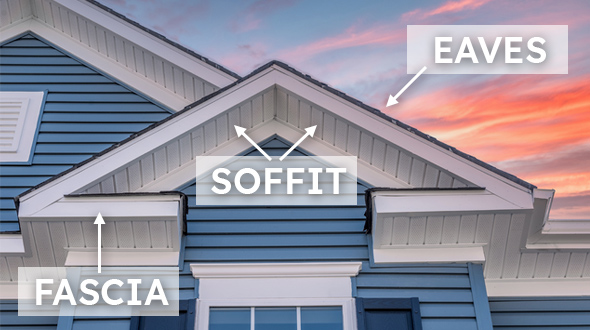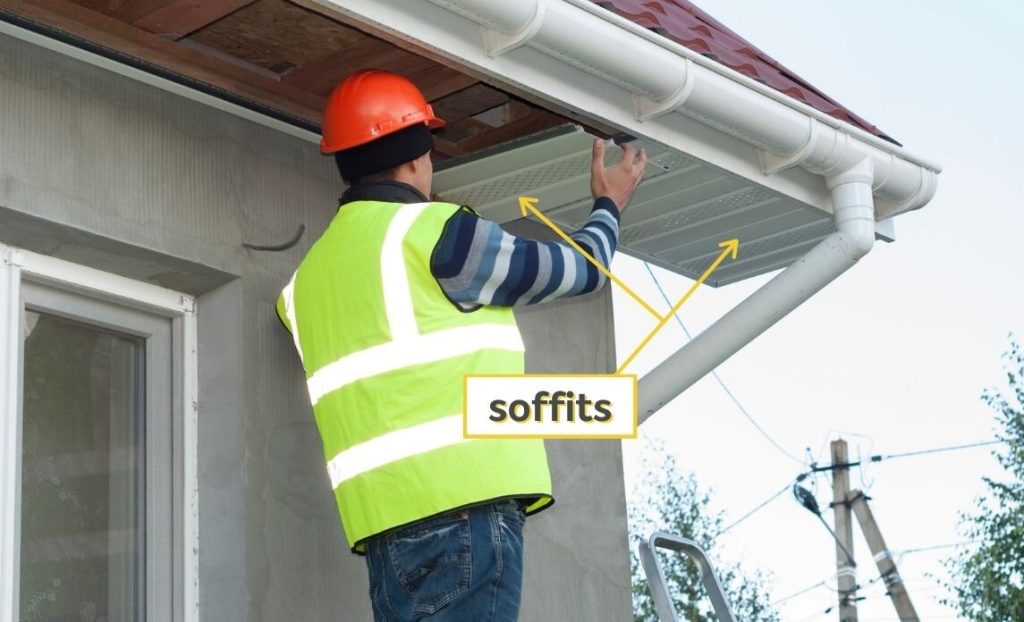Soffits are a type of roof construction material used to guard against the elements. A soffit provides protection against the rain, snow, and cold. It can also provide attractive architectural features, depending on the materials used, such as those found in New England homes or those found in Pennsylvania Dutch houses. In either case, the soffit offers both practical and visual benefits.
open or closed soffits
Basically, a soffit is either an open or closed style roofing structure, usually the open, aloft underside of whatever building element it protects. Its archetypal shape, sometimes implying or incorporating the appearance of dormers, is often the underside of roofs. The vertical shaft at the very edge of the roof is known as a fascia or rafters. Often, these structural elements combine with the roof deck ventilation soffit system to create an attic ventilation soffit. If the soffit vents permit, they can also serve to enhance the energy efficiency of the house.
soffits in warm weather
In warm climates, soffits act as a kind of greenhouse, trapping heat within the soffit and allowing cooled air from above to ventilate the soffits. They work especially well in New England and on Cape Cod, Massachusetts. Warm soffits are especially beneficial in hot climates because they provide a place for the structure of the home to conserve energy, often requiring the use of open or covered vents. For example, during the summer, open or uncovered soffits on Cape Cod allow warmer air to enter the attic than during the winter, which allows warm air to leave the house through an attic fan. Likewise, in New England, warm soffits on ridges around the chimney may allow moisture to escape and condense, which could freeze the interior of the soffit.

roof soffits
Roofed soffits are different than overhangs. Overhangs are typically flat and straight, so when they meet a flat roof, the result is usually a sloping roof. On a sloped roof, the soffit meets the rafters at an angle. This angle and the pitch of the soffit as a whole can determine several things, including the potential for valleys between the rafters and soffit, the amount of insulation necessary to prevent the soffit from becoming too cold during winter, and the amount of heat loss through the attic. Roofing experts often advocate the use of battens and other forms of fixings to make the pitch of a roof as flat as possible.
curb appeal
Aesthetics are important when choosing the pitch and design of soffits and roofs, but soffit vents and their ability to provide adequate ventilation are often overlooked by home builders and home owners. Good ventilation is important because it allows warm, moist air from inside the house to escape, helping to keep a house comfortable and in shape, even during the winter months. Poor ventilation can lead to aches and pains in the shoulders, back, arms, neck, and head.
Many older homes have soffits but have poor soffit ventilation. The solution to this problem is to hire a professional contractor to do the work. A professional roofer will be able to properly install the soffit vent in the proper area so that it can properly function. This ensures that the soffit has the ability to effectively perform its function during cold and extreme weather.

